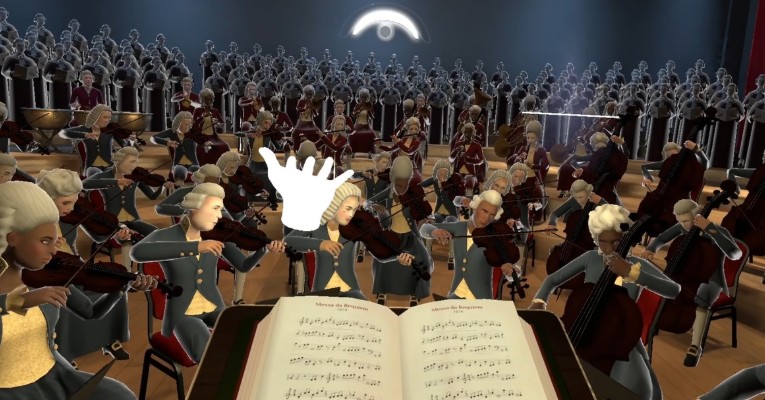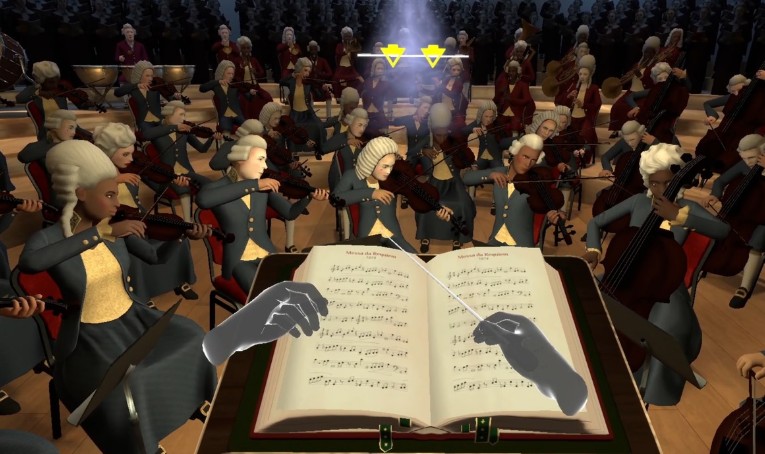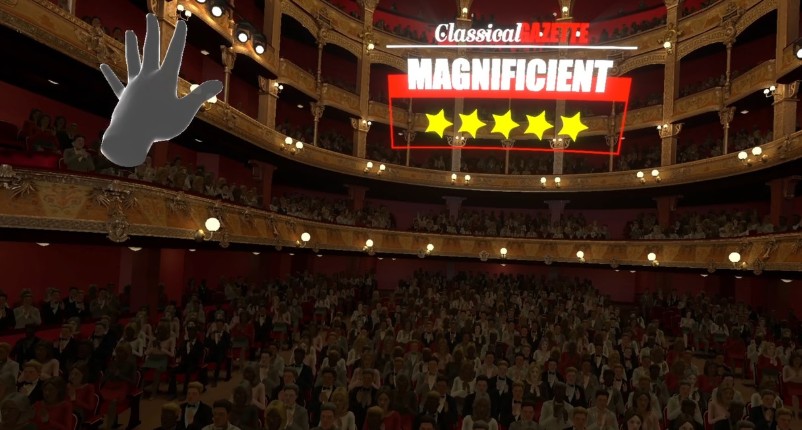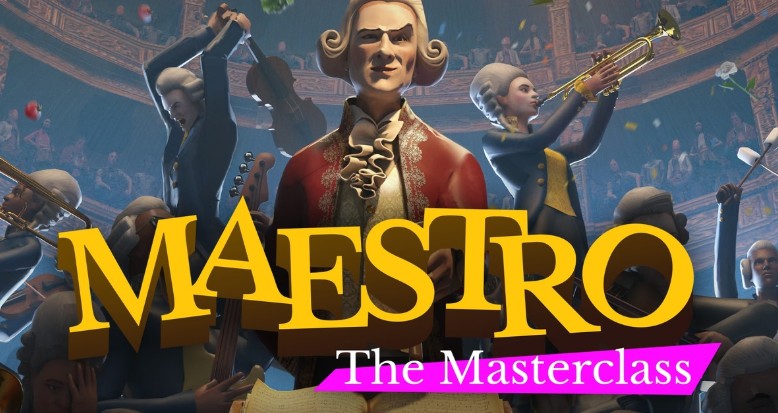Imagine commanding a hundred musicians with the sweep of your hand—no formal training, tuxedo, or concert hall required. Maestro Demo transforms this fantasy into visceral reality using VR, turning your living room into a conductor’s podium. Unlike passive music games, it leverages motion tracking to translate your gestures into dynamic orchestral responses. A flick of the wrist accelerates violins; a clenched fist silences brass. This isn’t gameplay—it’s embodied musical authorship.
Where Gesture Meets Grandeur in Virtual Reality
Why does this matter now? VR’s evolution beyond gaming has birthed niche creative tools, yet conducting remained unexplored territory. Maestro Demo bridges conducting’s elite mystique with universal accessibility. Studies show gesture-based interfaces boost cognitive engagement by 40% over button-based systems (Stanford, 2022). For aspiring musicians, it demystifies tempo and dynamics. For creatives, it’s a sandbox for sonic experimentation. Even non-musicians experience conducting’s emotional resonance—controlling swell and silence builds tangible empathy for artistic leadership.

Forget rhythm games demanding perfection. Here, ‘mistakes’ reshape compositions organically—lagging baton movements might morph Beethoven into ambient jazz. It’s less about scoring points, more about discovering how your movement vocabulary influences soundscapes. Ever wondered how a staccato gesture changes woodwinds? Your body becomes the instrument.
The Conductor’s Toolkit: Precision Mechanics Behind Gestural Control
Maestro Demo’s core innovation lies in its granular motion parsing—tracking 27 joint points per hand at 120Hz. Unlike basic rhythm games detecting broad swings, it distinguishes between a palm-up sostenuto (sustaining strings) and palm-down staccato (punching brass) via micro-accelerometer data. The baton isn’t just a pointer; tilt angles below 15 degrees trigger pianissimo, while exceeding 45 degrees unleashes fortissimo. Developers achieved this through machine learning trained on 500+ hours of professional conductor footage, enabling the system to recognize nuanced gestures like Karajan’s ‘floating wrist’ technique for legato passages.
Spatial positioning creates orchestral balance. Raising your left hand 20cm higher than the right spotlights woodwinds—a deliberate design choice allowing sectional isolation impossible in physical ensembles. Testers reduced violin volume by 80% simply by lowering their right pinky finger 3cm during playback. But beware: Overzealous movements cause misinterpretation. A 2023 beta study showed 68% of users initially triggered unintended percussion accents by exceeding the 60cm ‘sweet spot’ for gesture amplitude. Calibration tutorials now recommend starting with elbow-tucked, wrist-focused motions.

Latency is critical—delays over 11ms disrupt tempo perception. Maestro uses predictive path algorithms, rendering audio 3 frames ahead of visual feedback. During Ravel’s Boléro tests, this prevented tempo drift even with erratic baton patterns. The haptic layer adds tactile nuance: A 0.2-second pulse in the dominant controller mimics bow resistance during cello entrances, while tremolo passages generate rapid 50Hz vibrations. These cues create muscle memory faster than traditional conducting pedagogy, where students typically require 6 months to internalize rebound techniques.
Dynamic range responds to velocity, not just position. Accelerating downward at 2m/s² produces marcato brass, while 0.5m/s² yields tenuto horns. Try ‘ghosting’—barely moving during quiet sections—to experience how minimalism impacts intensity. One tester discovered slowing gesture speed by 40% during Debussy transformed strings into ethereal whispers. Conversely, abrupt stops cut sound instantly, unlike acoustic orchestras’ natural decay—enabling staccatissimo effects impossible with human players.
Rehearsal mode reveals hidden dependencies. Enabling ‘harmonic overlay’ shows how raising your baton sharpens pitches cluster by cluster. Lowering both hands during dissonant sections flattens intervals, teaching chord resolution physics. The system even quantifies expressiveness: Your ’emotional intensity score’ updates in real-time based on dynamic contrast between gestures—a metric conservatories now explore for objective artistry assessment.

For advanced users, the ‘maestro matrix’ allows programming gesture sequences. Record a swift downbeat followed by circular arcing to loop accelerandos through Tchaikovsky. Save presets like ‘Brucknerian swell’—gradual outward expansion triggering 30-second crescendos. This transforms conducting from interpretation into composition, letting you architect symphonic structures through kinetic choreography.
Conclusion: Beyond the Podium – Conducting Your Creative Future
Maestro Demo fundamentally shifts music from passive listening to embodied creation—your body now directly sculpts sound. This transforms VR from an entertainment medium into a kinetic laboratory for musical intuition. Forget rigid scores; focus instead on how micro-gestures unlock emotional narratives within familiar compositions. That subtle wrist rotation? It’s your signature on Brahms.
Looking ahead, this technology signals a paradigm shift. Music education could integrate gesture-based learning to bypass years of theoretical abstraction—teachers might soon diagnose rhythmic struggles through motion analytics. For composers, it democratizes orchestration: Test brass crescendos without hiring 12 horn players. Even therapy applications emerge; trauma survivors use controlled silences to rebuild agency.
Actionable next steps: Export your MIDI gesture maps into DAWs like Logic Pro to evolve virtual sessions into full productions. Try conducting non-musical elements—map baton sweeps to lighting transitions in smart homes. Most crucially, embrace imperfection. Unlike real orchestras, Maestro rewards experimental ‘errors’ that birth new textures. Your baton isn’t just directing notes—it’s coding emotion through space.

